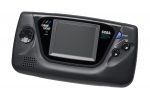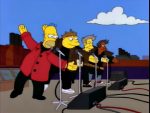A lot of people fail to differentiate between a something that’s a commercial failure, and one that doesn’t meet expectations. In the case of the latter, the product can still sell well, and even be profitable. However, it didn’t end up performing as well as the manufacturer had hoped. Failing to capture market share despite its strengths and loyal cult followings. Which pretty much sums up the life of Sega’s legendary Game Gear handheld.
To start off, we need to go back to 1989, when Nintendo had just released the Game Boy. It wasn’t the first handheld gaming system. Not by a long shot. Others, such as Nintendo’s own Game & Watch series, or Milton Bradley’s Microvision, had predated it by almost a decade. However, it was the first to combine exchangeable ROM cartridges with a dot matrix LCD display. Essentially giving the system an unlimited library of possible games. While revolutionary in terms of its concept, the Game Boy was anything but under the hood. Nintendo had adopted a policy of re-purposing “withered technology” in order to make the system as affordable as possible. As such, it would utilize a decidedly dated Sharp processor, a paltry 16KB of RAM, and its rather infamous puke green reflective LCD display.
The Game Boy was not a premium system. Nor was it meant to be. This was the budget option compared to the more expensive NES. And at a launch price of just $89.99, it proved difficult for many gamers to pass up. Especially with it packing in that wacky Soviet block stacking game everyone was going nuts about.
Of course rival Sega was watching all this unfold with great interest. They were desperate to finally dislodge Big N from their near monopoly over the home video game market. Their earlier Master System console had been moderately successful, especially in Europe. Meanwhile, the Mega Drive, the first true 16-bit home system, was starting to pick up momentum following its launch in 1988. But how could they compete with Nintendo in the handheld sphere? Well, the simplest solution was to just make something better. A more premium product that would win over the hardcore gaming crowd. But one that was not so expensive that it would be out of reach of most consumers. Easier said than done.
So Sega decided go the decidedly Apple-esque route: take something that already exists and make it smaller.
Nintendo already had a huge head start in the brand new handheld console market. Sega needed something they could get into stores as quickly as possible to make up for lost time. Well, Master System was still a perfectly good console. So under the code name “Project Mercury”, Sega got to work condensing its innards down into something that could fit in your pocket. Well, at least in theory.
The Game Gear would make it out of the door a year later. December 1990 in Japan, followed by an April launch in North America. The device was nearly identical to the Master System, sporting the same 8-bit Zilog Z80 CPU running at 3.5 MHz and 24KB of RAM. While weaker than the Genesis, it was certainly nothing to chuff at. The Master System always had more juice under the hood than the NES. And for a brief window in time, Sega actually had a handheld that was more powerful than Nintendo’s flagship console. Yet this wasn’t the only trick they had up their sleeves.
The Game Boy’s monochrome LCD was limited to just four shades of grey. Or rather, four shades of a rather off-putting yellowish-green. Something which was later revised to a less nauseating true greyscale with the Game Boy Pocket. The Game Gear however was in glorious colour right from the start. Something which would take Nintendo nearly a decade to achieve.
The system was capable of displaying 32 colours at a time from a palette of 4,096. And it was fully backlit too. No having to contort at weird angles just to see your game. Now, this screen was a far cry from what we’d deem the bare minimum of acceptable today. It was a bit washed looking and ghosted more than my Tinder matches. However, colour LCDs were still by and large a new technology in 1990. It was sort of akin to the OLED display Sony would use for the Vita some two decades later in terms of novelty. Indeed this was a bit of a revolution for handheld gaming, which if you’ll recall Nintendo had already just revolutionized. Everything up to that point had largely used pre-drawn graphics. The Game Boy’s dot matrix display was a massive step forward. This was years ahead of its time.
Basing the Game Gear on Master System hardware would also prove to be a stroke of genius when it came to getting games for the system. Sega already had a large existing library to draw on. All they needed to do was put those games on smaller cartridges, repackage them, and boom! Instant success. And while not officially supported, there were third party add-ons that would even allow you to play Master System cartridges on the handheld. Something a bit unthinkable today, but certainly a win for consumers at the time.
When the Game Gear first launched in Japan, it came with three initial titles. Kawaii maze game Pengo, racer Super Monaco GP, and Columns, Sega’s answer to Tetris. When it launched in the US some six months later, only Columns was available for some strange reason. Though several other games would slowly trickle out over the course of 1991.
Initial sales of the device were strong. The limited stock at launch quickly sold out in Japan, with back orders numbering 600,000 units. Sega of America marketing director Robert Botch noted at the time that “there is clearly a need for a quality portable system that provides features other systems have failed to deliver. This means easy-to-view, full-color graphics and exciting quality games that appeal to all ages.”
Much like the Genesis, Sega positioned its handheld to target an older audience. Mostly Generation X, who by now were starting to enter their teens, and looking for more mature content than what Nintendo was offering. The two companies would end up in a fierce marketing campaign for portable supremacy. One which resorted to tactics that would be considered a little too edgy by today’s standards.
In a series of advertisements, Sega likened Game Boy players to the obese and uneducated. “If you were color blind and had an IQ of less than 12, then you wouldn’t mind which portable you had,” one ad boldly declared. In retaliation, Nintendo sought to organize protests for insulting disabled people. To which then Sega of America CEO Tom Kalinske responded that maybe they “should spend more time improving their products and marketing rather than working on behind-the-scenes coercive activities.” Seems the more things change in the video game industry, the more they stay the same.
While the ads were certainly packed with all the 90’s in-your-face ‘tude kids loved, they didn’t appear to sway the public in the same way similar campaigns were doing for the Genesis. Indeed, cracks began forming fairly early on that would lead to the system floundering in the marketplace.
For starters, the Game Gear was quite a bit more expensive than the Game Boy. At $149.99 USD ($289 in 2021) it was nearly double the price of its rival. That’s not a considerable sum to pay for a premium handheld these days. Heck, the vanilla Switch is only $10 more when adjusted for inflation. However, it was pretty steep for 1991. Especially considering that you could get a Genesis or SNES for only about $50 more. And those consoles, while not portable, didn’t have any operating costs associated with them.
You see, the problem with being ahead of your time is that you often have to wait for other technologies to catch up. And with the Game Gear, it was always batteries.
Blue LEDs, required to make white LEDs, would not be invented for another decade. So the Game Gear had to make use of a cold cathode florescent backlight. This is a big part of why the console was so thick, it gave the Xbox Duke controller a run for its money. Those early lights were bulky, inefficient, and required high voltages to operate. So were very power hungry. On top of this was the fact that the Master System’s hardware wasn’t exactly designed to be portable. As such, the Game Gear required 9 volts of power, sucking 3-watts, or 333mAh of electricity.
This doesn’t seem like a big deal today. However, this was long before higher density NiMH and Li-ion rechargeable batteries reached mass consumer adoption. Common NiCad cells were expensive and could only store 600mAh on average under ideal conditions. Thus giving the Game Gear less than two hours of run time before they needed topping up. So rechargeable packs were largely a no-go. Most would end up relying on disposable alkaline batteries. Which were cheaper to buy, but you needed six of them compared to just four for the Game Boy. Even then, the Game Gear could only get maybe 5 hours of gameplay, going downhill with a strong tail wind. So costs of buying new batteries would add up very quickly. Most people ended up caving and buying an AC adapter, which gave unlimited playtime, but drastically limited the handheld’s portability. Compare this to the Game Boy, which only needed four AA batteries, and could go 30 hours on a single charge. Later revisions got that down to two AAA cells.
There was also the issue getting fresh content for the system. Nintendo held a virtual monopoly over the video game market at this time. Third party publishers were essentially barred, through a series of contract regulations, from releasing games on competing platforms. That is if they wanted to do business with the House of Mario. This caused significant headaches for anyone else who wanted to put out a console. Namely Sega, NEC, and Atari, who all had brand new systems releasing around this time. Sega of America had been aggressive about offering developers cherry deals to break the terms of the contracts. Not to mention wooing new upstart developers like EA, who had previously been PC exclusive. As such, the Genesis ended up getting a fairly robust library of third party games.
The Game Gear though lacked the sales momentum of its bigger brother. So much of its library relied on ports of existing first party games from the Master System. This was not necessarily a bad thing. The Master System did have a great collection, with a lot of high quality releases not available on other platforms. And since the Game Gear had near identical hardware, 1:1 conversions were possible. Making the handheld one of the first true console replacement devices. But the library was mostly older titles, and never really grew to a sizable number. It also lacked that elusive killer app that would drive customers to purchase the system. There was no Tetris, and certainly no Pokemon. It had Sonic, but his 8-bit outings certainly couldn’t compete with his 16-bit counterparts.
Perhaps the biggest tragedy with the Game Gear was there was no one thing that sabotaged it. Arguably, it was the PSP of its day. Sleek, powerful, with an excellent library of console quality games. A true premium handheld experience, which the market has show there certainly is demand for. Even the battery life issues weren’t insurmountable, once players purchased a wall adapter. And to be honest, most people weren’t going to play it for more than an hour or two at a time. Had rechargeable batteries been better, it would have been near perfect. At least for its time. Indeed the Game Gear may actually be even better today thanks to high capacity batteries and IPS display mods. Though you may want to consult a professional if you want to install the latte. It’s not for the feint of heart.
What really killed the Game Gear was the simple fact that the Game Boy had achieved too much momentum, too early, and came out of the gate swinging with a killer app. Nintendo had a winning strategy. They gobbled up so much market share that any new player was going to face a steep uphill battle. Some 30 years later, nobody has ever been able to crack Nintendo’s hold over the handheld market. Sony came close with the PSP, though never recaptured that success with its follow up. To this day, the Game Gear is still the third best selling non-Nintendo handheld ever released. And while that may only be a little over 10 million units, that’s not bad for the first to face down a juggernaut. It certainly paved the way for Sony. Though that’s another story for another day.





